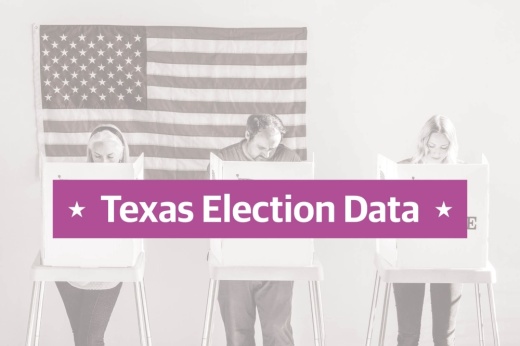The deadline to register to vote in the Nov. 8 general election was Oct. 11. To check your voter registration status, click here.
Oct. 24-Nov. 4: Early voting available for all registered voters
As long as someone is registered to vote on Election Day, they may choose to vote anytime during the early voting period. Early voting is available anywhere in a voter’s county of residence.
Sam Taylor, a spokesperson for the Secretary of State's office, said officials expect at least 50% of voters will participate in early voting this year.
In Travis County, early voting hours are extended at five megacenters: the Austin Permitting and Development Center, the PACE Campus Gym, the Southpark Meadows shopping mall, the Millennium Youth Complex and the Ben Hur Shrine Center.
These locations will be open from 7 a.m.-9 p.m. on Oct. 29 and Nov. 4. All early voting locations in Travis County will be open from 7 a.m.-7 p.m. Monday-Saturday and noon-6 p.m. on Sundays.
For more information about early voting in your area, contact your county clerk’s office.
Oct. 28: Applications due to vote by mail
To vote by mail, a voter must submit an application to their local early voting clerk. All applications for mail-in ballots must be received—not postmarked—by Oct. 28, Taylor said.
Texans are eligible to vote by mail if they are at least 65 years old, are sick or disabled, expect to give birth within three weeks of Election Day, will not be in their county of residence on Election Day or during early voting, or are in jail for a nonfelony charge.
Civilly committed sexually violent predators, as defined by the Texas Health and Safety Code, can also apply to vote by mail.
Planning ahead
On Election Day and during early voting, voters must bring one of seven approved forms of identification to the polls. These include a Texas driver’s license, a Texas election ID certificate, a Texas personal ID card, a Texas handgun license, a U.S. citizenship certificate, a U.S. military ID card or a U.S. passport.
Texans who do not have and “cannot reasonably obtain” an approved ID may fill out a form at the polls, which briefly explains why they do not have typical identification. The voter will then present an alternate form of identification, such as a birth certificate, a utility bill or a voter registration certificate.
For more information about Texas’ voter ID law, visit www.votetexas.gov.
Becoming a poll worker
Under Texas law, someone is eligible to become an election worker if they are a U.S. citizen and a qualified voter in their county of residence. Election workers are appointed by a presiding judge in their voting precinct, according to the secretary of state.
You can sign up to become an election worker here.
After registering, applicants must complete the Online Poll Worker Training program, which includes lessons, case studies and exam questions.
High school students who are at least 16 years old can serve as election clerks during early voting and on Election Day. Interested students can fill out a permission slip and get it signed by their parent or guardian and school principal.
How Texans voted in previous elections
Community Impact compiled and analyzed data for each primary and general election from 2012 through 2020. The below charts visualize voter turnout for each county in our markets.
Austin Editor's note: The Comal County Clerk only stores election data for three years, so Community Impact was unable to create an accurate visualization of the county's voter turnout.
Houston Dallas/Fort Worth San Antonio





